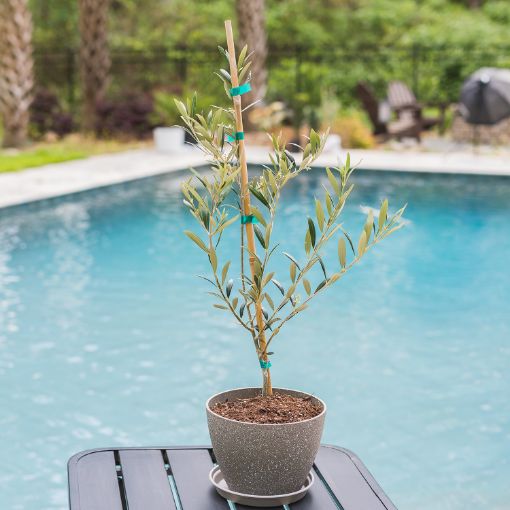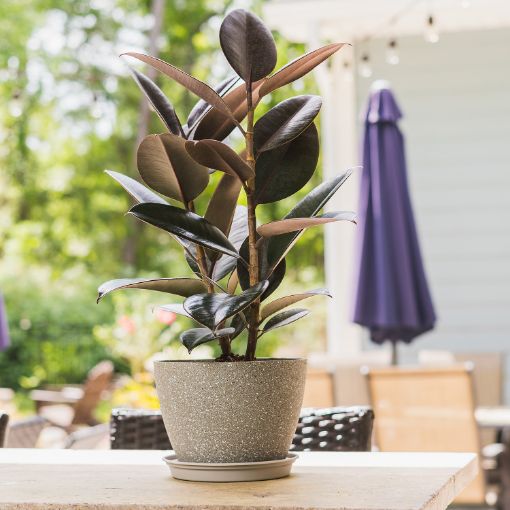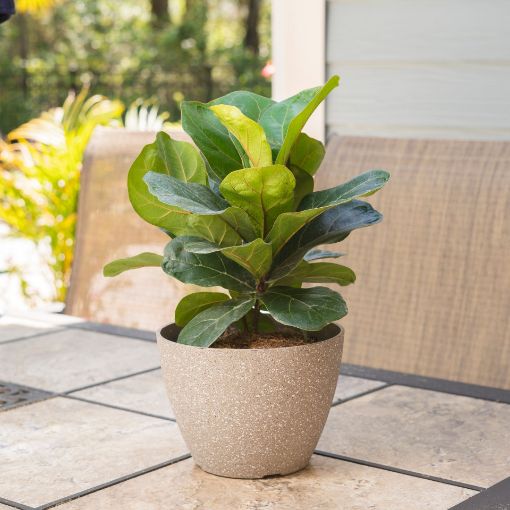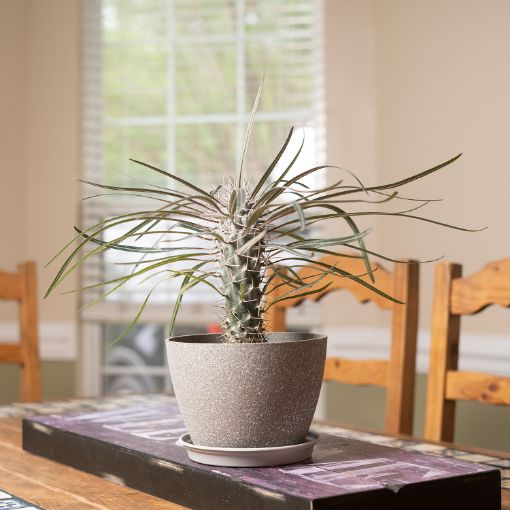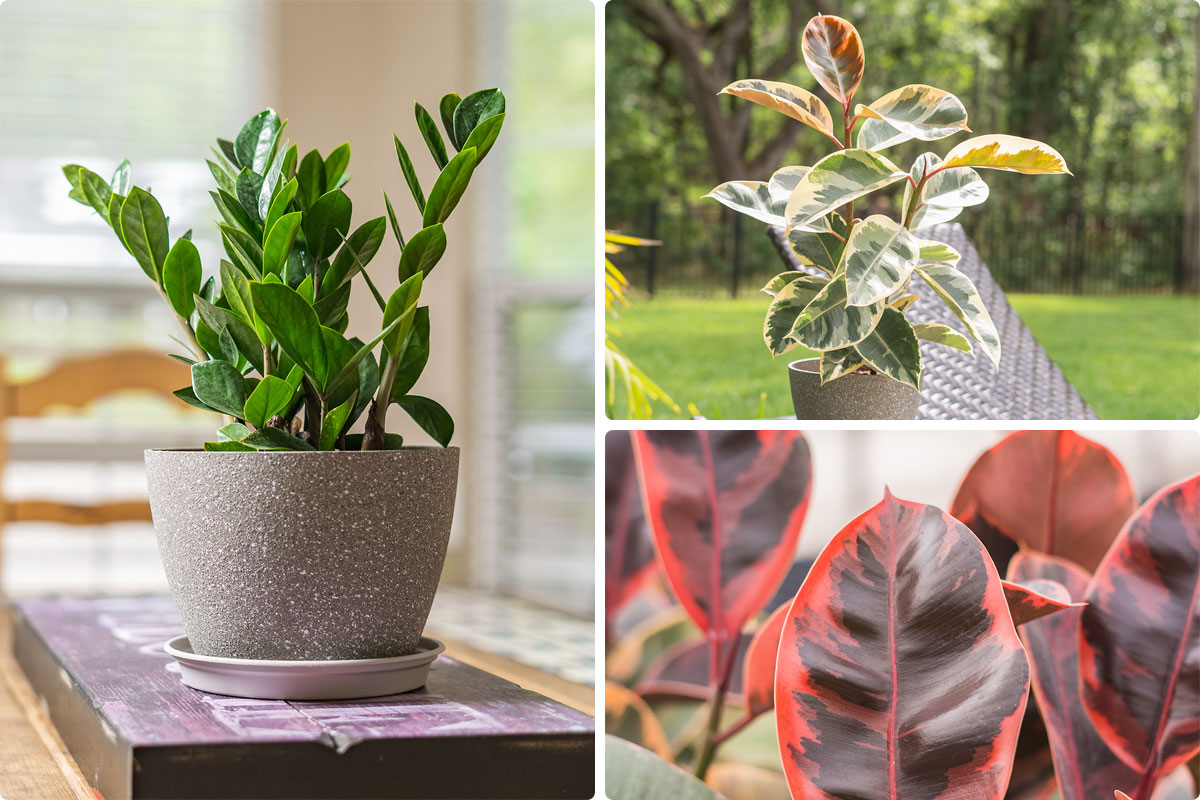
Bring home the amazing benefits of trees with our selection of indoor and patio plants. Every houseplant and small tree comes ready to grow in a decorative pot, perfect to send to a plant lover as a gift or to green up your own balcony, living room, or office.
Plus, for every container tree or indoor plant you buy online from our nursery, we’ll plant a tree in a forest of great need.
That’s one for you and one for the planet!
Top Picks
Let’s get growing
Tips for happy house and patio trees
Plants delivered from our nursery arrive in a decorative pot ready to be placed in the perfect spot. Here are some general tips to keep them happy and healthy, but refer to specific care instructions for each individual plant for best results.
-
Temperature
House and patio plants can be easy to care for as long as they are in a warm environment with some air circulation.
Many indoor plants have a growing season during warmer parts of the year. Most do best when the temperature is around 70-80°F during the day and 60-70°F at night. When plants are dormant during cooler months, they are happy with slightly lower temperatures, around 50-60°F. Just be sure to avoid cold drafts. -
Location
The best place to put your plant is somewhere with bright but indirect light, like an east-facing window. South and west windows also work well, but avoid intense rays of sun, especially in the summer. Try to avoid drafty vents or fans to keep new indoor plants happy.
Small trees and plants are perfect for apartments, courtyards, patios, and indoor areas where space is limited. Each plant will have slightly different needs, so read about your specific plant here. -
Watering
Each patio tree and indoor plant has different watering needs, so read up on your plant here. For most, a good rule of thumb is once a week with room-temperature water. In general, water when the soil feels dry to the touch. A moisture meter or your finger works well for this. The smaller the pot, the more frequently it will need watering. Large, leafy plants will also need more frequent watering than more compact plants.
Remember, your plants and trees will need more water when the weather is dryer and hotter, but don’t let them sit in water—this can cause root rot. -
Fertilizer
If you want to fertilize your indoor plants, a good option is an all-purpose, slow-release fertilizer that will provide nutrients after each watering.
-
Pruning
When pruning houseplants, remove any discolored leaves and shape the plant how you’d like. To encourage bushy new growth, snip off some dormant buds, staggering the amount you trim off each branch or stem. For most plants, spring is the best time to prune because the increasing light will help support recovery and encourage new growth.
-
Repotting
Your plants will be delivered in a decorative pot and are ready to grow right out of the box. However, depending on how actively they grow, they may be ready for a larger pot every 12 to 18 months. Add well-draining potting soil to a larger pot with drainage holes. Keeping soil from becoming waterlogged is key to preventing root-rot. Water your plant well after repotting, but don’t worry about fertilizer yet. Freshly potted plants don’t need it as they get established.
-
Pets
When ordering plants, be sure to keep in mind who they will be sharing a home with. Some plants may be toxic to your furry friends. Some common indoor trees and houseplants that are dangerous for pets are lilies, philodendron, and aloe vera. Be sure to check if it may be harmful to pets before bringing a new plant into your home!
